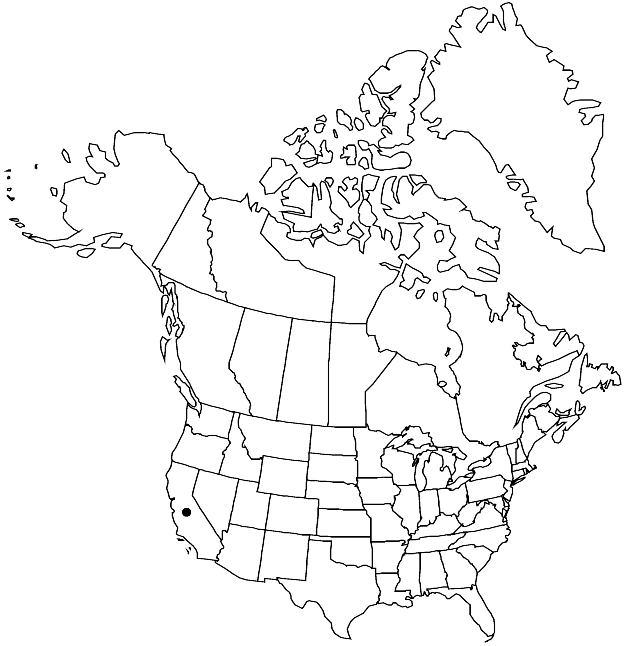Streptanthus glandulosus subsp. glandulosus
Stems 1–10 dm, densely to moderately hirsute proximally, moderately to sparsely so distally. Cauline leaves: blade conduplicate or flat distally, margins entire or denticulate, surfaces densely to sparsely hirsute. Racemes not secund; rachis straight. Fruiting pedicels 3–15 mm, sparsely pubescent or glabrous. Flowers: sepals reddish purple, dark maroon, or lilac-lavender, 5–13 mm, sparsely pubescent or glabrous; petals lavender to purple (with or without darker purple veins), 8–17 mm; adaxial filaments 8–13 mm. Fruits ascending to divaricate or reflexed, straight or arcuate; valves glabrous or sparsely pubescent. 2n = 28.
Phenology: Flowering Apr–Jul.
Habitat: Rocky, often barren, ultramafic or metamorphic (Franciscan formation) slopes, chaparral openings, steep slopes in woodland
Elevation: 0-1400 m
Discussion
As delimited here, subsp. glandulosus is hetero-geneous, with varying flower color, fruit orientation, and indumentum density. It grows in Alameda, Colusa, Contra Costa, Lake, Mendocino, Monterey, Napa, San Benito, San Luis Obispo, Santa Barbara, Santa Clara, Solano, Sonoma, Stanislaus, and Tehama counties.
Selected References
None.
Lower Taxa
"elongated" is not a number."thick" is not a number."dm" is not declared as a valid unit of measurement for this property.
